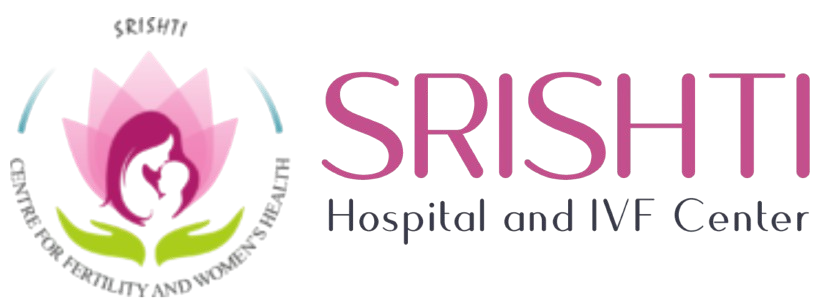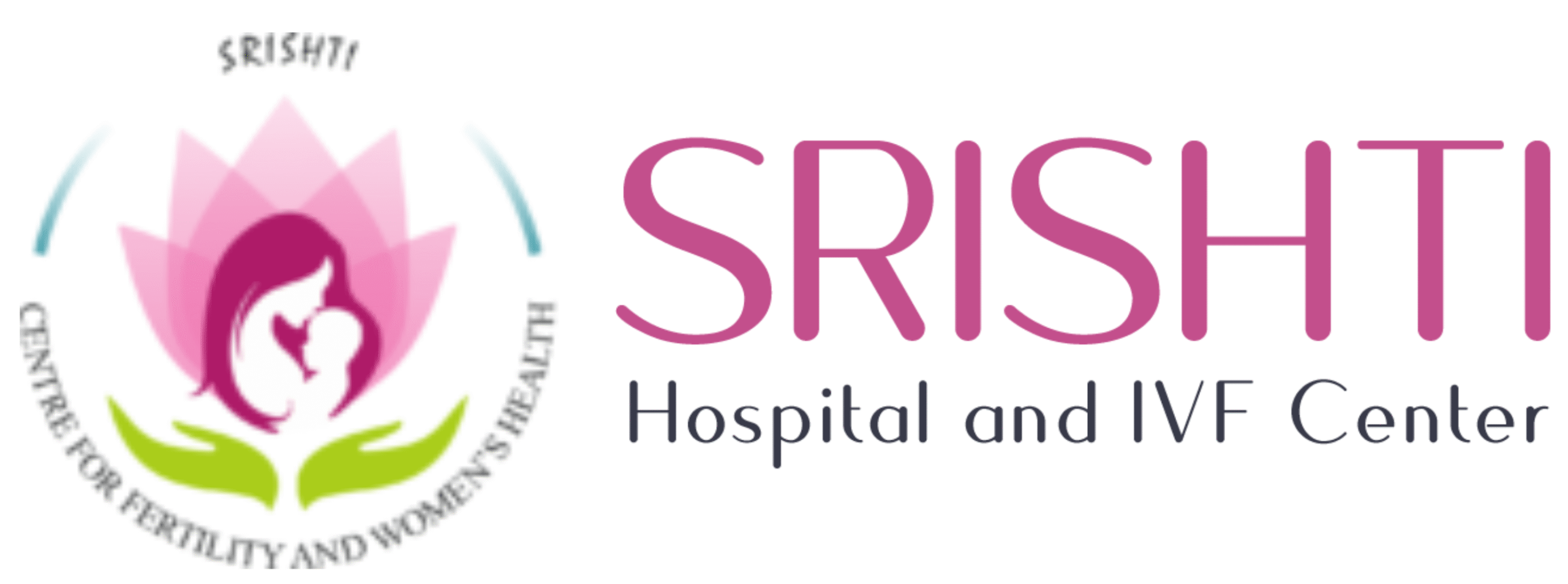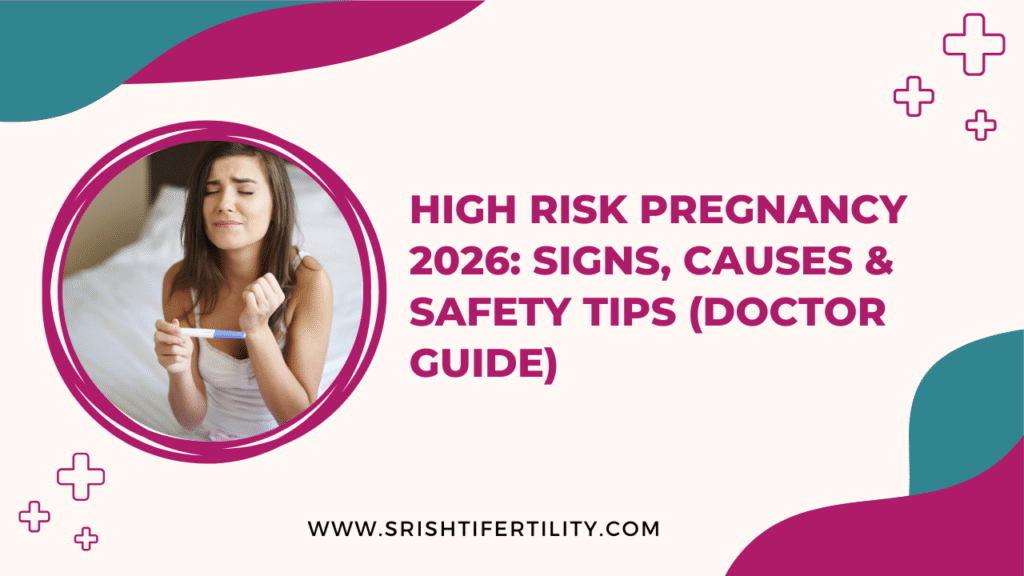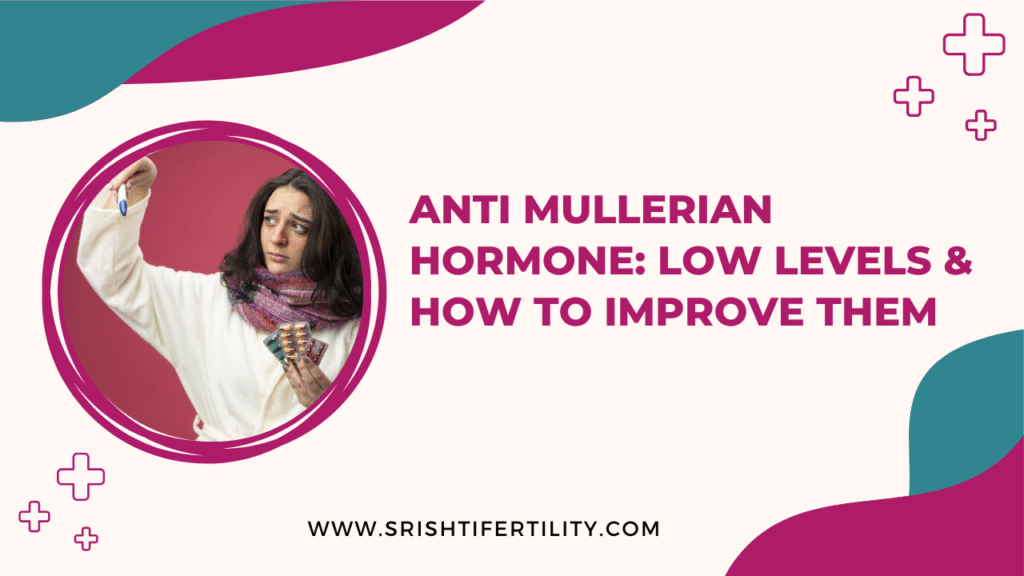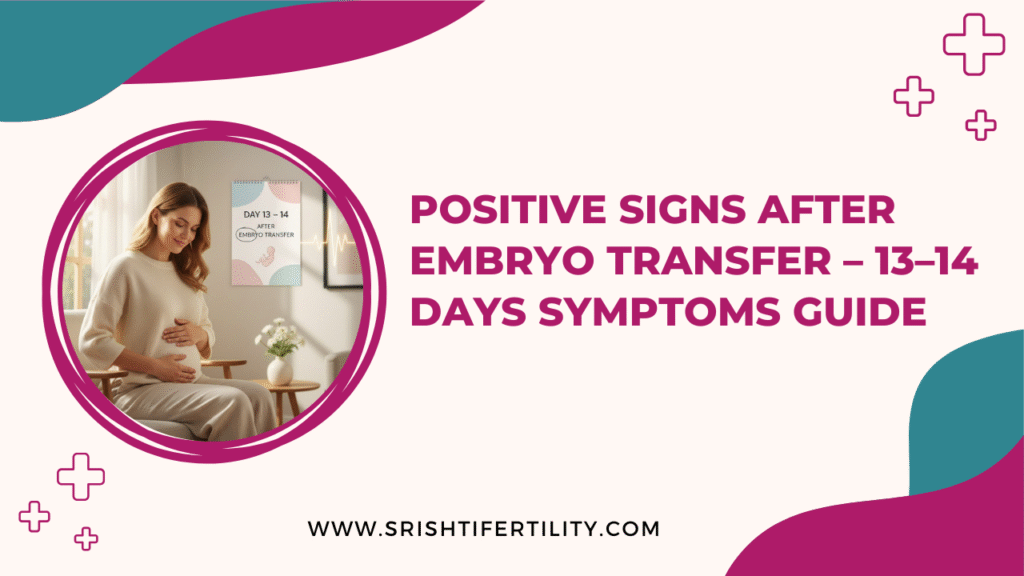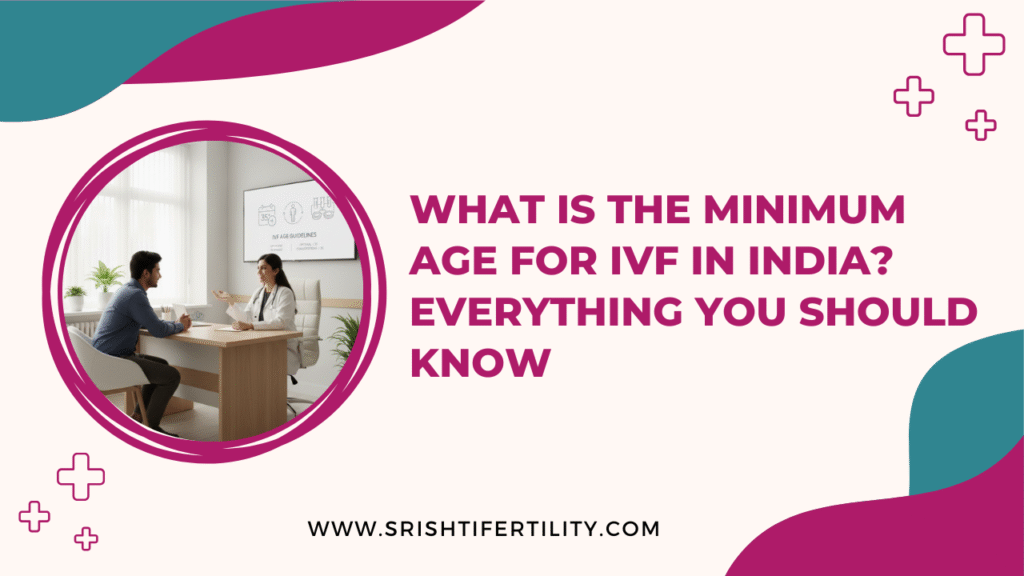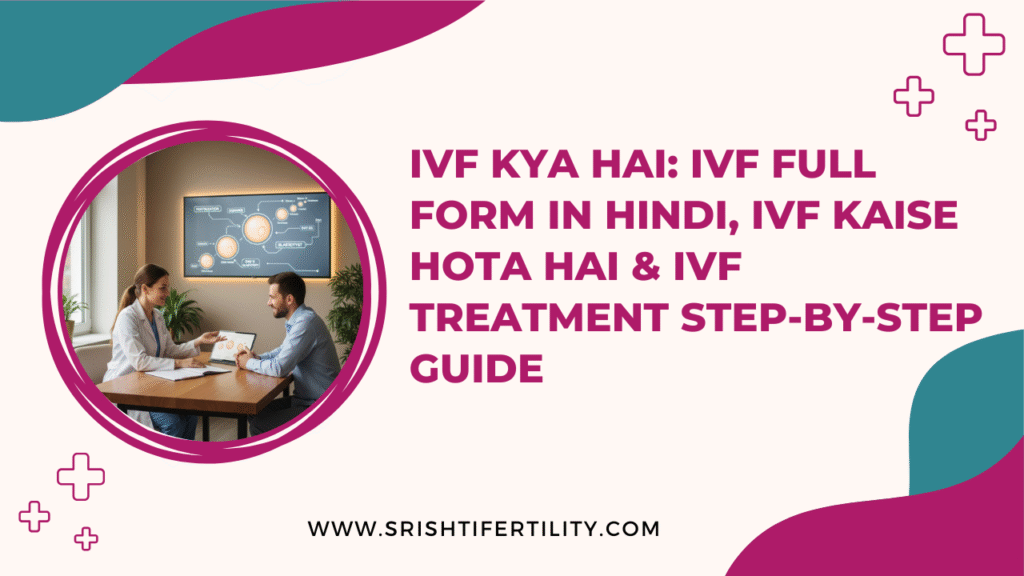High Risk Pregnancy 2026: Signs, Causes & Safety Tips (Doctor Guide)
High-risk pregnancy is a term no expecting mother wants to hear. However, knowing about it can help protect both mother and baby. In 2026, better screenings and improved prenatal care make it easier to identify and manage high-risk pregnancies. Trusted places like [Srishti Hospital and IVF Centre] help ensure this process is safer and more effective. This guide explains what a high-risk pregnancy is. It covers the causes, symptoms, and types. You will find risk categories based on charts. It also includes safety tips and advice from doctors. This will help you confidently manage your high-risk pregnancy. What Is a High Risk Pregnancy? A High Risk Pregnancy means that the mother, baby, or both are more likely to develop complications. Various factors, such as predisposing medical disorders, one’s lifestyle, or a condition associated with pregnancy, could cause this. Understanding the list related to high-risk pregnancies keeps expecting mothers alert and helps them search for timely support from medical experts. The doctor uses a high-risk pregnancy chart. This chart helps to categorize risks based on age, health issues, fetal growth, and pregnancy history. Types of High Risk Pregnancy Depending on the cause, there are several types of high risk pregnancy. These include: The risk may be identified early or later in pregnancy by your doctor according to the symptoms and test results. Causes of High Risk Pregnancy Understanding the causes of high-risk pregnancy is important for its prevention. Common causes include: These can be causes for various complications; hence, close medical supervision is necessary. High Risk Pregnancy Symptoms Although some women may not feel different, many women experience high risk pregnancy symptoms including: If any of these occur, seek immediate attention from your doctor. High Risk Pregnancy List (Common Risk Factors) Doctors often refer to a high risk pregnancy list which includes: Being on this list just means extra care is needed; it does not mean your pregnancy will have complications. Safety Tips for High-Risk Pregnancy (Doctor Guide) Staying healthy during a high-risk pregnancy is possible if the right steps are taken: Centres like Srishti IVF cater to high-risk mothers requiring expert care with specialized monitoring and advanced maternal support. FAQ Section (Doctor-Approved Answers) 1. What is high-risk pregnancy management and care? Managing high-risk pregnancies includes regular check-ups, scans, blood tests, and fetal monitoring. It also involves nutritional advice and help with medication. The aim is to detect complications in time and maintain the safety of both the mother and the baby. 2. What are some common examples of high-risk pregnancies? These conditions include: – Diabetes during pregnancy – High blood pressure – Twin pregnancies – Placenta previa – Heart disease – Thyroid problems – Being pregnant over age 35 3. How do you prepare for a high risk pregnancy? This includes starting with a checkup before pregnancy. It also means managing chronic illnesses and keeping a healthy weight. You should take folic acid, avoid smoking and alcohol, and follow regular prenatal care. 4. What occurs when one is experiencing a high-risk pregnancy? Your doctor provides additional monitoring, including more ultrasounds, blood pressure checks, sugar tests, and fetal well-being scans. A doctor may also advise rest or medication, depending on the complication. 5. What are the complications of a high-risk pregnancy? Possible complications that may arise include preeclampsia, preterm birth, gestational diabetes, low or high amniotic fluid, fetal growth restriction, and complications during delivery. Heart-Related FAQs in Pregnancy 6. What is the normal heart rate of a pregnant woman? A normal maternal heart rate ranges from 70–100 bpm; this may increase slightly with pregnancy because of the extra blood flow. 7. What are the cardiac changes during pregnancy? Pregnancy increases blood volume, cardiac output, and heart rate. This is because the heart works harder to pump more oxygen for the mother and baby. 8. Heart rate in excess of 100 BPM is normal during pregnancy. A heart rate, which is essentially slightly above 100 beats per minute, can be normal because of physiological changes. However, a consistently high heart rate requires evaluation for anemia, dehydration, or thyroid issues. Amniotic Fluid FAQs 9. How much amniotic fluid is normal in pregnant women? Normal amniotic fluid index ranges from 8–18 cm. Below 5 means low fluid, and above 24 means excess fluid. 10. What is the result when there is an increase in amniotic fluid? This is known as polyhydramnios and may be associated with breathlessness, preterm contractions, or complications in the fetus that need monitoring. 11. What is amniotic fluid? Amniotic fluid is a protective liquid surrounding the baby; it allows for lung development, movements, temperature control, and cushioning against injury. 12. Why is the amniotic fluid low at 34 weeks of pregnancy? Oligohydramnios or low fluid at 34 weeks may be because of dehydration, placental issues, leakage of fluid, maternal hypertension, or diabetes. Most medical professionals monitor it and may recommend hydration or early delivery based on the severity. Read more : IVF treatment kaise hota hai aur iske steps kya hain, ye sab jaankari aapko milegi [ IVF Kya Hai: IVF Full Form in Hindi, IVF Kaise Hota Hai & IVF Treatment Step-by-Step Guide ] me. Conclusion A high-risk pregnancy can feel overwhelming, but with proper care, awareness, and medical support, most women deliver healthy babies. Understanding the definition, symptoms, causes, and safety guidelines of a high-risk pregnancy will help you stay prepared and confident in every way. Be it heart rate monitoring or checking the level of the amniotic fluid, or just following the advice of your doctor—every little action counts. For those mothers who are surrounded by risks or complications, expert care from trusted centres like srishtiIVF provides reassurance, safety, and advanced pregnancy management. Early detection with timely care forms the difference. Follow us on Instagram and on Facebook
High Risk Pregnancy 2026: Signs, Causes & Safety Tips (Doctor Guide) Read More »
